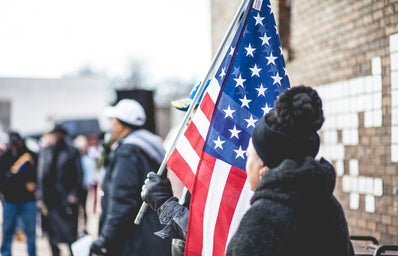The term “Black history” as it is used in e/ducation can be a double-edged sword. Black history is taught in history courses every day when students learn about the history of America and the world. Black history tells the American story, and important decisions starting all the way from the Revolutionary War to the Civil Rights and Women’s Suffrage Movement are inseparably intertwined with Black history. American history cannot be taught without Black history.
Looking back on how Black history was taught to me, I noticed that our curriculum gives off the impression that the struggle for equality has been resolved. The curriculum, at least where I grew up, did a good job of teaching how bad slavery and subsequent segregation laws were, but the narrative would always settle at a complete resolution by the late 20th century.
Our country is still in the midst of a struggle for equality amongst races. The effects of past segregation laws are felt deeply by so many communities. Even though many outwardly racist laws have been repealed, more subtle practices still remain in place.
The issues of racism and socioeconomic inequality are inseparable in this conversation. The African American community suffers from higher rates of poverty and homelessness than the white population. Black people cannot be considered to have the same equal opportunity as other racial groups in America until the socioeconomic barriers holding them back are resolved.
Any good narrative, especially one that tells an unfinished story, needs a “call to action” for its readers. In an educational setting, this would allow students to see that they still carry the onus to achieve racial equality. While we learn a lot about legal and social reform, we do not learn as much about what the impact of racism itself looks like in the present day.
A big threat to this teaching approach is the push against critical race theory which is the idea “that U.S. social institutions (e.g., the criminal justice system, education system, labor market, housing market, and healthcare system) are laced with racism embedded in laws, regulations, rules, and procedures that lead to differential outcomes by race.” Proponents of critical race theory agree that racism need not be overtly apparent in individual action. Racism in our country can, and does, stem from institutions that continue to operate in ways that put certain racial groups at a disadvantage. It is important for students to learn how these institutions fuel racial divides.
Newly elected Virginia governor Glenn Youngkin (R) has been a strong opponent of critical race theory. He defends his stance claiming that he wants to address parental concerns that he has been receiving, but is not transparent about what he will replace critical race theory with. In a recent interview, Youngkin stated that, “getting rid of divisive concepts in schools is really important.” However, a political framework such as critical race theory should not be divisive. Years of research provide evidence supporting the fact that America’s largest institutions proliferate racism, whether intentionally or not. It is the duty of educators to show students America as it is, not just as it should be.


